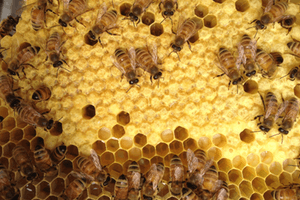- All-In-One Beekeeping for the Bees
- +1-608-728-8233
- info@beepods.com
These Are the Top 5 Spring Bulbs to Plant In Fall for Pollinator-Friendly Blooms

Plant crocus bulbs in fall, and watch the bees flock to them in March

Snowdrops emerge early in the season and are a perfect source of forage for your bees
Beekeepers like you, who care about the health and wellbeing of their colonies, need to know a thing or two about gardening to make sure their bees have adequate sources of forage throughout the year. Fortunately, it’s simpler than ever. You just need to know what flowers bees love, what season they bloom, and the right time to plant them. Follow along to find out the top five bulbs to plant in fall for pollinator-friendly spring blooms.
Why You Should Plant Spring Bulbs
Let’s face it. One of the toughest times for beekeepers is the transition period from winter to spring. Especially in colder climates, honey bees emerge from the warmth of their cluster and are sometimes met by delayed spring blooms, excessively wet weather, and temperature fluctuations that make it challenging for them to start producing wax, honey, and brood again.
Don’t sleep on early spring blooms; they can make or break your beekeeping season. Fall is the time to embrace spring planting.
When to Plant
When it comes to planting bulbs in the fall to ensure beautiful spring blooms, mark your calendars for late-September through October (if you’re near Beepods HQ in Milwaukee, Wisconsin). If you live in the South, you can plant in November through much of December, since you have milder winter temps, you lucky ducks.
Make sure you know your frost dates because you’ll want to get those bulbs into the ground before it freezes. Bulbs need to have time to start putting down roots, establishing themselves in the ground in preparation for spring blooms. Additionally, many bulbs require some time in a cool, refrigerated environment prior to planting, so wherever you order your bulbs from, double-check whether the company already cooled them down for you, or if you need to plan ahead.
Finally, do your research into annuals and perennials. While annuals typically bloom longer, they won’t come back next year; you may want to invest in perennials, which return year after year and minimize how much time you spend digging in the dirt.

Plant crocus bulbs in fall, and watch the bees flock to them in March
What Spring Bulbs to Plant
Let’s make this real easy. There are five excellent spring flowers bees love you can plant in the coming months to ensure happy bees in March and April. Here they are:
- Crocuses
These beautiful early blooms come in shades of purple, pink, and yellow. With a max height of a couple of inches, they look lovely filling in the spaces between taller flowers and bushes.
- Snowdrops
Delicate and one of the first signs of spring, snowdrops emerge between melting snowbanks, which is where they get their namesake. These small flowers love a spot with sunlight.
- Daffodils
Deer resistant daffodils will come back year after year once you plant them the first time. Enjoy varieties in various shades of yellow, cream, and light orange.
- Tulips
Tall tulips are showstoppers in a spring garden—and bees love them. Available in a variety of colors, these tall blooms look great when mixed with shorter blooms like grape hyacinths and crocuses.
- Siberian squill
You may recognize a bee that visited Siberian squill by the blue pollen adorning its hindlegs. Besides the striking pollen, these early spring blooms are a great source of nectar for honey bees.

Consider planting daffodil bulbs for a pollinator-friendly spring bloom
Final Thoughts
Planting for the bees doesn’t have to be difficult or require you to do extensive research. Much like beekeeping, gardening can be a process that involves a lot of trial and error, and if you plant a bulb that doesn’t bloom, you can try again next year, armed with any observations you made during the planting process. To make sure you are successful in your planting, keep these tips in mind:
- Check frost dates before planting bulbs
- Check the soil pH prior to planting; bulbs like a slightly acidic pH of 6-7
- Assess the sunlight levels in your yard; early spring blooms like sunlight
- Read the packages your bulbs come in and follow the instructions
- Plant bulbs at a depth 2-3 times the height of the bulb
If you have any additional questions about planting early spring flowers for the bees, feel free to email us at info@beepods.com or get in touch with our friends over at Cultuvate.
Websites where you can order early spring bulbs:
https://www.americanmeadows.com/flower-bulbs/fall/bee-friendly-flower-bulbs
https://www.whiteflowerfarm.com/bulbs-for-pollinators
https://www.florissa.com/spring-flowering-pollinator-friendly-bulbs/
Caitlin Knudsen
Latest posts by Caitlin Knudsen (see all)
- How to Change Your Students’ Lives With Project-Based Learning - November 20, 2020
- Watch The Pollinators to See How We Can All Choose to Change Agriculture - November 13, 2020
- 6 Cold Weather Feeding Tips You Have to Know - November 6, 2020



